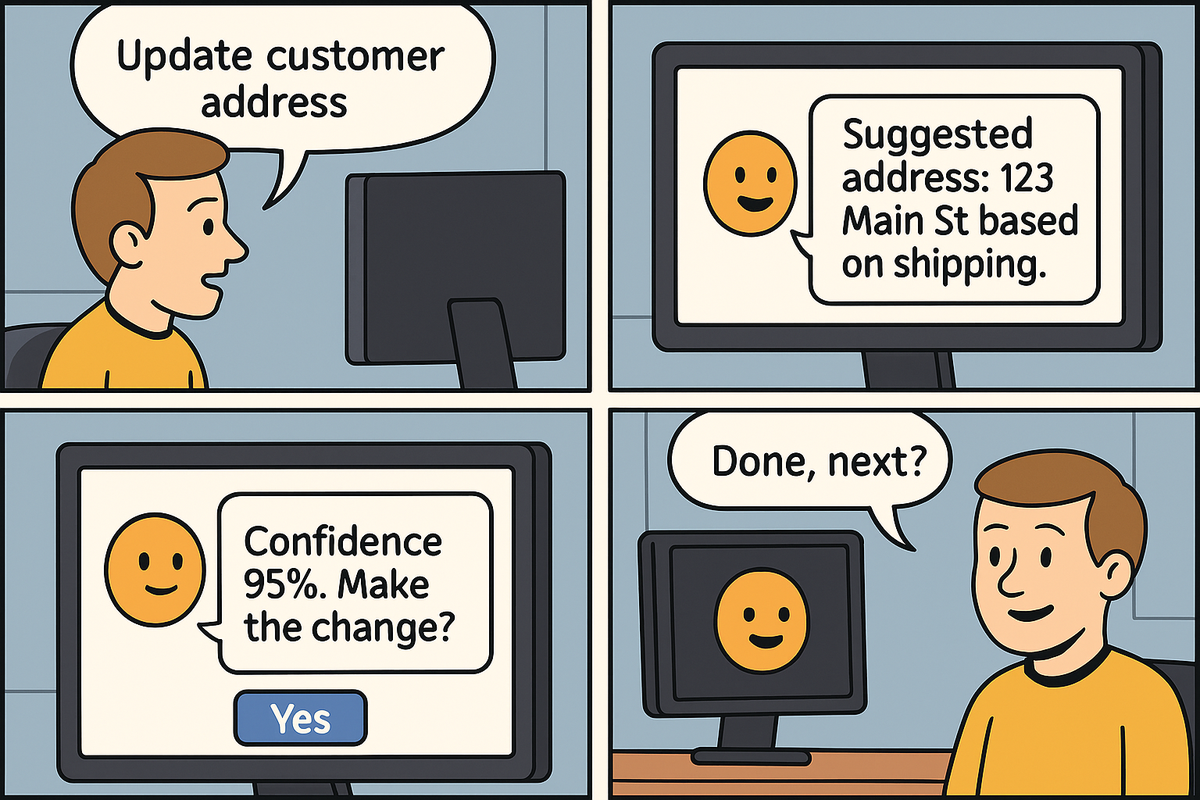Intro:
You can capture intent perfectly. You can build seamless outcome-first flows. But if users don't trust the system to act correctly on their behalf - none of it matters.
Trust isn’t a feature.
It's a continuous experience - built moment by moment, interaction by interaction. Building agent systems users actually trust requires transparency, explainability, and earned confidence.

1. Trust Is Built, Not Assumed
Users will not automatically trust agents.
Especially in critical systems (finance, HR, operations), users expect to see:
- How decisions are made
- Why certain actions are suggested
- Where information comes from
If trust is broken early - through silent errors, hidden assumptions, or confusing flows - it’s almost impossible to recover.
Transparency is your insurance policy.
2. Make the Agent’s Thinking Visible
Good agent UX should show its "work" without overwhelming the user.
Techniques:
- Inline rationales ("Suggested based on previous billing address change in March.")
- Source tags ("Data pulled from customer profile updated on 4/12.")
- Option to "view details" - but not forced up front
Users need to feel they could inspect decisions at any time - even if they usually don’t.
3. Confidence Modeling: Knowing When to Ask vs Act
Not every agent decision should be automatic.
Use confidence scoring internally:
- High confidence (>90%) → proceed silently, notify after
- Medium confidence (60-90%) → propose action, request confirmation
- Low confidence (<60%) → pause, escalate, or ask for clarification
Example:
"I'm 95% confident this is the correct billing address update. Would you like to review before applying?"
This builds user trust without making the system feel insecure or hesitant.
4. Handling Errors Transparently
Mistakes will happen.
Great agent UX:
- Admits when it doesn’t know
- Surfaces uncertainty early
- Makes course correction easy
Bad UX hides failures or dumps cryptic error codes.
Good UX says:
"I couldn’t complete the update because the customer's account is frozen. Would you like to retry after resolving?"
Own the error.
Protect user trust at all costs.
5. Gradually Shifting Control to the Agent
Early interactions should bias toward confirmation - users stay in the loop.
As the agent proves itself, the system can:
- Batch actions and notify after
- Take initiative more aggressively
- Become a true co-pilot, not just a command parser
Trust is built in layers.
Rushing autonomy before trust is earned leads to system rejection.
6. Real-World Case Example
Scenario:
User asks: "Update primary billing address."
High Trust Agent Flow:
- System suggests the most recent shipping address
- Explains rationale ("Most recent verified address used for deliveries in May.")
- Displays a single confirmation screen
- Notes fallback plan if update fails ("We’ll alert your admin if update is blocked.")
Result:
- Fast action
- Full user control
- Safety net built in
Users feel supported - not blindsided.
Closing
Trust is the invisible scaffolding behind every successful agent system.
Without it, even the best flows collapse under doubt and hesitation.
Design agents to:
- Think visibly
- Admit uncertainty
- Ask when unsure
- Celebrate successful actions openly
When trust is baked into every interaction, adoption follows naturally.
What's Next
With trust established, we’ll wrap the series by highlighting common pitfalls that sabotage agent-driven transformations - and how to navigate around them before they sink your rollout. Because smart agent design isn't just about getting it working - it's about getting it adopted.
Stay tuned.